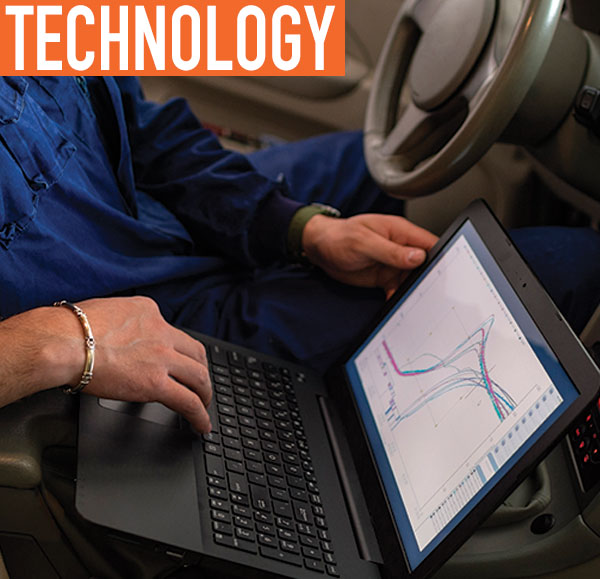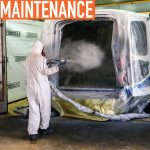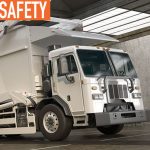Big data is one of the topics on many people’s minds these days. In case that immediately makes you uncomfortable, I’d like to demystify it for you. In an industry that’s rapidly streamlining efficiency around a new generation of technologies and tools, you are at risk of getting left behind if you opt not to leverage big data. The best part: Data won’t make things more confusing for fleet owners but, rather, will make things clearer.
First, an example: A few years ago, when everybody was asking me if I was using Facebook or LinkedIn, I kept playing the old-guy card. I said I wasn’t really into social media. But, I finally realized that there was no good reason not to take advantage of it. It’s just technology, right? These days, we’re constantly being given data about things like fuel trends and driver behaviors. With the rise of telematics information, data integration is more beneficial than ever.
Just like social media, big data is right at our fingertips. Fleet owners now also have access to people like those of us at WEX, whose focus is on compiling data for clients and partners and putting it into a format that anyone can use and on which action can be taken. Here are four things you should know about big data to be able to do just that:
- You don’t have to be a data scientist to take advantage. In the fleet industry, “big data” means taking disparate information related to fleets, vehicles, and driving behavior, and analyzing it to find actionable insights that can help fleet owners change behaviors, monitor policies, save money and time, and become more efficient. You shouldn’t be scouring through lines and lines of information. You don’t have to know algorithms or understand how data sets are built. A good data collection partner will begin by asking you what you specifically want to gain—e.g., route optimization, accident reduction, or fraud prevention—and will find the needles in the haystacks of data and return to you related recommendations on benchmarking and best practices.
- You don’t need dozens of data sources. There’s a misconception that when it comes to big data, you need many pieces of information to pull together. That’s overwhelming. Instead, focus on a few pieces of critical information that provide insights on their own and put them together to find deeper insights. For example, to figure out which are the most optimal locations to fuel along a route, you may want to look at your fueling information and telematics information at the same time.
- Use visual representations of data to find outliers. We can give people pages and pages of data, but if it’s difficult for them to cull through and find the important nuggets, then that data isn’t worth much. Visual representations make a much greater impact. When you look at a scatter plot and see one dot in the far right corner away from the cluster of other dots, it makes it much easier for you to say, “There’s an issue: Why is this behavior so different from everybody else’s?” At a minimum, it highlights something to explore further. When using a data collection platform, look for something that simplifies and visualizes the data. WEX’s new platform, ClearView Advanced, provides fleet owners with clear visual representations of data, allowing for easy interpretation and real business improvements.
- Take action on your data. You will always know your business better than any data collector. That knowledge combined with the information at hand is powerful. Real value is when you can customize a solution based on the insights that data has yielded. If you’ve found an outlier on a scatter plot, for instance, you have several options. You may want to consult with a driver or talk to a manager about what might be going on and consider what sort of appropriate coaching you could provide to change behavior. Coaching is more about the carrot than the stick. This can have a huge and measurable impact. With WEX’s new ClearView Advanced platform, fleet owners were able to change the undesirable behavior with more than ¾ of fleet drivers the first time around.
Big data is everywhere. It’s not scary—it’s just information you can use to become more efficient. Even if you’re not a data person, you need to find ways to embrace it, adopt it, and take advantage of it. If not, you will find yourself—and your fleet—working harder and harder to keep up.
ABOUT THE AUTHOR
Bernie Kavanagh is SVP and general manager of North America Large Fleet at WEX, where he is responsible for acquiring and fostering partnerships and telematics operations for large fleets. Kavanagh joined WEX in 1996 and has been a crucial part of the vastly successful growth of the fleet line of business. Find out more about WEX products and services, visit www.wexinc.com.
_______________________________________________________________________
MODERN WORKTRUCK SOLUTIONS: JUNE 2017 ISSUE
Did you enjoy this article?
Subscribe to the FREE Digital Edition of Modern WorkTruck Solutions magazine.
![]()




